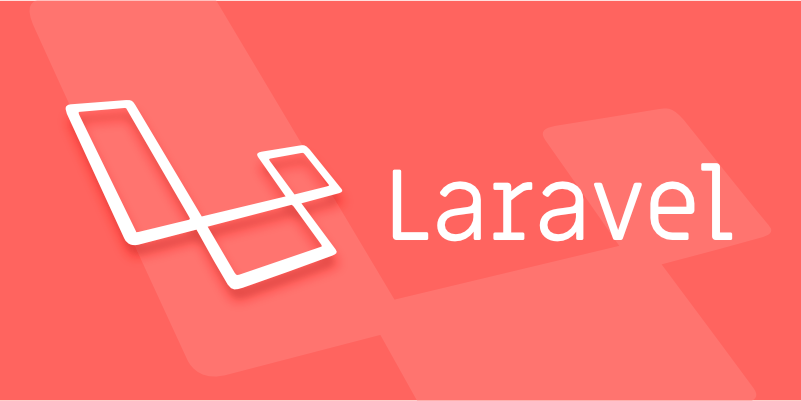There are four main ways to create custom validation rules in Laravel. First, use Rule objects to add complex conditions, such as combining database queries and ignore methods to achieve unique verification; second, encapsulate custom logic in form requests, and reuse and clear structure by rewriting rules() method; third, use closures to write instant rules, suitable for simple judgment scenarios; fourth, create custom rule classes to make the organization clearer and easier for testing and team collaboration. Developers should choose appropriate verification methods based on specific business scenarios to improve code maintainability and development efficiency.

Creating custom validation rules in Laravel is not difficult, the key is to understand the several flexible ways the framework provides. Laravel native validators are already powerful, but some business logic may require you to write custom rules to ensure the accuracy of your data.

Add complex conditions using Rule objects
When your verification logic is a little more complicated, using Rule objects is a good choice. It is often used for database-related checks, such as determining whether a field is unique under specified conditions.

For example: Suppose you want to verify whether the email address already exists when editing user information, but you don’t want to count the current user’s email address as well:
use Illuminate\Validation\Rule;
$request->validate([
'email' => [
'required',
'email',
Rule::unique('users')->ignore($user->id),
],
]);This can avoid misjudging duplicate emails by ignoring IDs. You can also chain call the where method to further refine the query conditions.

Encapsulate custom logic in form request
If your verification rules are complicated or if the same logic is used in multiple places, it is recommended to use a custom form request (Form Request) . You can create a form request class through Artisan:
php artisan make:request StorePostRequest
Then rewrite rules() method in the generated class and add your own logic:
public function rules()
{
Return [
'title' => 'required|unique:posts|max:255',
'body' => 'required',
];
}You can also add custom judgments directly, such as deciding whether to allow posting of articles based on the user role.
Writing instant rules using closures
Sometimes you don't need too complex structures, just want to add a verification logic quickly, and you can use closures:
'title' => [
'required',
function ($attribute, $value, $fail) {
if (strtolower($value) === 'admin') {
$fail('The '.$attribute.' cannot be "admin".');
}
},
],This writing method is suitable for simple judgments, but is not suitable for handling too complex logic, otherwise it will make the code difficult to maintain.
Custom Rule Class: A clearer way to organize
For large projects or frequently reused rules, Laravel provides methods to create custom rule classes:
php artisan make:rule ValidUsername
The generated class will have a passes() method and a message() method:
class ValidUsername
{
public function passes($attribute, $value)
{
return !preg_match('/\s/', $value);
}
public function message()
{
return 'Username cannot contain spaces. ';
}
}Then use it like this when verifying:
'username' => ['required', new ValidUsername];
This approach is suitable for teamwork and is easier to test and reuse.
In general, Laravel offers a variety of ways to implement custom validation rules, and you can choose the most appropriate way based on the specific scenario. It is not complicated, but the details are easy to ignore: when to use closures, when to abstract them into classes, and how to write efficient rules based on database queries.
The above is the detailed content of Creating Custom Validation Rules in Laravel?. For more information, please follow other related articles on the PHP Chinese website!

Hot AI Tools

Undress AI Tool
Undress images for free

Undresser.AI Undress
AI-powered app for creating realistic nude photos

AI Clothes Remover
Online AI tool for removing clothes from photos.

Clothoff.io
AI clothes remover

Video Face Swap
Swap faces in any video effortlessly with our completely free AI face swap tool!

Hot Article

Hot Tools

Notepad++7.3.1
Easy-to-use and free code editor

SublimeText3 Chinese version
Chinese version, very easy to use

Zend Studio 13.0.1
Powerful PHP integrated development environment

Dreamweaver CS6
Visual web development tools

SublimeText3 Mac version
God-level code editing software (SublimeText3)

Hot Topics
 What are routes in Laravel, and how are they defined?
Jun 12, 2025 pm 08:21 PM
What are routes in Laravel, and how are they defined?
Jun 12, 2025 pm 08:21 PM
In Laravel, routing is the entry point of the application that defines the response logic when a client requests a specific URI. The route maps the URL to the corresponding processing code, which usually contains HTTP methods, URIs, and actions (closures or controller methods). 1. Basic structure of route definition: bind requests using Route::verb('/uri',action); 2. Supports multiple HTTP verbs such as GET, POST, PUT, etc.; 3. Dynamic parameters can be defined through {param} and data can be passed; 4. Routes can be named to generate URLs or redirects; 5. Use grouping functions to uniformly add prefixes, middleware and other sharing settings; 6. Routing files are divided into web.php, ap according to their purpose
 What are policies in Laravel, and how are they used?
Jun 21, 2025 am 12:21 AM
What are policies in Laravel, and how are they used?
Jun 21, 2025 am 12:21 AM
InLaravel,policiesorganizeauthorizationlogicformodelactions.1.Policiesareclasseswithmethodslikeview,create,update,anddeletethatreturntrueorfalsebasedonuserpermissions.2.Toregisterapolicy,mapthemodeltoitspolicyinthe$policiesarrayofAuthServiceProvider.
 How do I create new records in the database using Eloquent?
Jun 14, 2025 am 12:34 AM
How do I create new records in the database using Eloquent?
Jun 14, 2025 am 12:34 AM
To create new records in the database using Eloquent, there are four main methods: 1. Use the create method to quickly create records by passing in the attribute array, such as User::create(['name'=>'JohnDoe','email'=>'john@example.com']); 2. Use the save method to manually instantiate the model and assign values ??to save one by one, which is suitable for scenarios where conditional assignment or extra logic is required; 3. Use firstOrCreate to find or create records based on search conditions to avoid duplicate data; 4. Use updateOrCreate to find records and update, if not, create them, which is suitable for processing imported data, etc., which may be repetitive.
 How do I run seeders in Laravel? (php artisan db:seed)
Jun 12, 2025 pm 06:01 PM
How do I run seeders in Laravel? (php artisan db:seed)
Jun 12, 2025 pm 06:01 PM
Thephpartisandb:seedcommandinLaravelisusedtopopulatethedatabasewithtestordefaultdata.1.Itexecutestherun()methodinseederclasseslocatedin/database/seeders.2.Developerscanrunallseeders,aspecificseederusing--class,ortruncatetablesbeforeseedingwith--trunc
 What is the purpose of the artisan command-line tool in Laravel?
Jun 13, 2025 am 11:17 AM
What is the purpose of the artisan command-line tool in Laravel?
Jun 13, 2025 am 11:17 AM
Artisan is a command line tool of Laravel to improve development efficiency. Its core functions include: 1. Generate code structures, such as controllers, models, etc., and automatically create files through make: controller and other commands; 2. Manage database migration and fill, use migrate to run migration, and db:seed to fill data; 3. Support custom commands, such as make:command creation command class to implement business logic encapsulation; 4. Provide debugging and environment management functions, such as key:generate to generate keys, and serve to start the development server. Proficiency in using Artisan can significantly improve Laravel development efficiency.
 How do I install Laravel on my operating system (Windows, macOS, Linux)?
Jun 19, 2025 am 12:31 AM
How do I install Laravel on my operating system (Windows, macOS, Linux)?
Jun 19, 2025 am 12:31 AM
Yes,youcaninstallLaravelonanyoperatingsystembyfollowingthesesteps:1.InstallPHPandrequiredextensionslikembstring,openssl,andxmlusingtoolslikeXAMPPonWindows,HomebrewonmacOS,oraptonLinux;2.InstallComposer,usinganinstalleronWindowsorterminalcommandsonmac
 How do I define methods (actions) in a controller?
Jun 14, 2025 am 12:38 AM
How do I define methods (actions) in a controller?
Jun 14, 2025 am 12:38 AM
Defining a method (also known as an action) in a controller is to tell the application what to do when someone visits a specific URL. These methods usually process requests, process data, and return responses such as HTML pages or JSON. Understanding the basic structure: Most web frameworks (such as RubyonRails, Laravel, or SpringMVC) use controllers to group related operations. Methods within each controller usually correspond to a route, i.e. the URL path that someone can access. For example, there may be the following methods in PostsController: 1.index() – display post list; 2.show() – display individual posts; 3.create() – handle creating new posts; 4.u
 How do I run tests in Laravel? (php artisan test)
Jun 13, 2025 am 12:02 AM
How do I run tests in Laravel? (php artisan test)
Jun 13, 2025 am 12:02 AM
ToruntestsinLaraveleffectively,usethephpartisantestcommandwhichsimplifiesPHPUnitusage.1.Setupa.env.testingfileandconfigurephpunit.xmltouseatestdatabaselikeSQLite.2.Generatetestfilesusingphpartisanmake:test,using--unitforunittests.3.Writetestswithmeth






